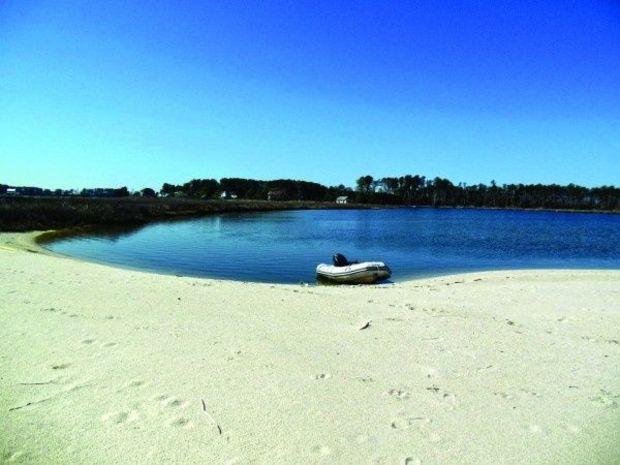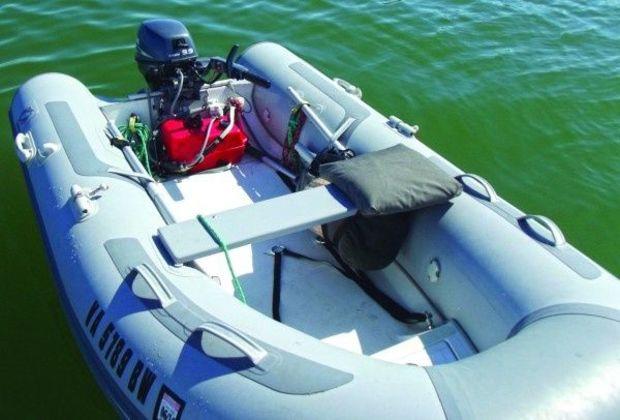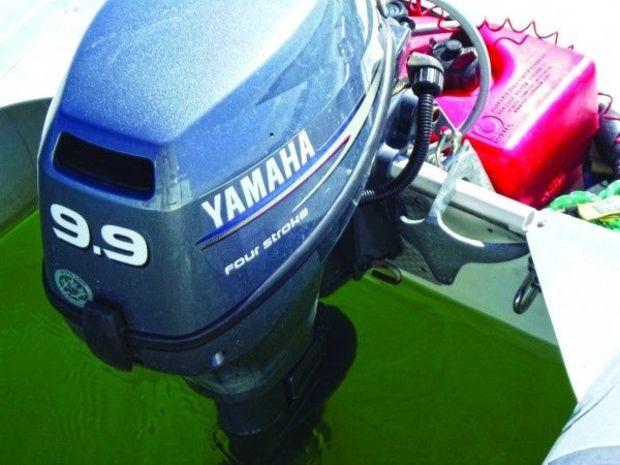Look at any marina dinghy rack, or any boats cruising the Bay and you will see that the inflatable dinghy is the dinghy of choice for cruisers. Visiting new locations, new coves, new marinas is why we have our boats. Having a dinghy adds options, fun, and enjoyment. Large or small, fast or slow, a dinghy will get you to a white sandy beach or into a hidden creek. A dinghy gets you from your anchored boat to a bar, restaurant, or a walk into town.
Dinghies come in a bewildering range of sizes, styles, and fabrics. How do you decide which will suite your needs? The decision is not always easy.
There are three principle factors to consider: 1. How and where will you store it? A dinghy that is hard to launch will not be used very often. 2. What do you need it for? Just an evening harbor cruise, short ride to shore, or longer explorations in creeks and rivers? 3. How will you power it? Oars, electric motor, or outboard?

Fabrics
The two fabrics used in inflatables are Polyvinyl Chloride (PVC) and Neoprene/Hypalon (aka Hypalon). Both fabrics have proven to be tough and reliable. They each have their advantages; selecting the fabric will depend upon how you cruise and how you plan to use your dinghy.
PVC is much lighter weight, and the material seams can be welded to make very strong and airtight tubes. With PVC, it is easier to fold and store the dinghy. PVC does not glue as well, and the glued joints may have a shorter life span. However the major manufacturers have all managed the welding process, and glued together PVC dinghies are a rarity today. Also, PVC material is not as resistant to UV. It is very tolerant of over pressure.
Boats made of PVC fabric tend to be priced significantly lower than comparable Hypalon boats. This fabric would be a good choice for a dinghy that is being used seasonally and stored in the off season. Hypalon’s advantage is its resistance to UV and to weather. For a dinghy to be used year round in the tropics, it is the only material to consider. The fabric must be glued; it cannot be welded. Glued seams are less airtight with age. It is heavier which makes it a bit more wear resistant. But it is heavier to lift and harder to fold and store.
Floors
Dinghies with soft floors, slatted floors, or air floors can be easily deflated and rolled up for storage. They are small and can be inflated in a few minutes with a foot pump. If you have a slatted-floor dinghy, it will not be able to plane, so you can use an electric motor or a small outboard.
Plywood floors have been the standard floor system for years. They give the boat a rigid bottom. These floors can be difficult to set up and to take apart. Generally once you assemble these, you do not want to disassemble them frequently.
High-pressure (HP) floors are pricy but worth the money. Having used HP inflatable floor dinghies for many years, I have to say they are incredible. It is essential to be sure the floor is fully inflated but that will give you a light firm hull, and the dinghy will plane easily. These boats are lighter and easier to put on the deck than a rib dinghy, with the added benefit that they can be deflated and stored in a very compact size.

If you are not concerned about deflating and storing the dinghy, but plan to use it most of the year, choose a rigid bottom. For this application you would be better off not to go with plywood but to go with a fiberglass bottom RIB. The folding transom RIB, “Rib Lite” is a better running dinghy than the plywood floor and stores in the volume of a stand-up paddle board.
RIB dinghies have “V” bottoms and tend to run better and faster. In the single floor rib, any rain water will collect in the center of the boat; where on a flat floor rib, there is a pocket at the transom where the water collects and can be easily pumped out. For year-round use, a RIB is the preferred choice.
Engines
A dinghy can be rowed short distances, but not into a strong head wind. Electric motors are simple and quiet. They have plenty of capacity to carry you through a weekend without recharging. However, most cruisers will use an outboard engine for power. Add a lightweight outboard, and your range increases. Now your range is a mile, not a hundred yards. Such a combination of light craft and light power source can be managed by most cruisers. The 2-hp air-cooled outboards are lightweight and easy to handle, albeit rather noisy. If you have the high-pressure floor, the wood- or aluminum-floor inflatable boat, or a rib, you have the ability to put on a larger engine so that the dinghy can plane. This gives you vastly increased range.

The choices in inflatable dinghies are many. If you have a small boat, go with a relatively smaller dinghy that you can more easily manage and store. If you have a larger boat, go with the largest dinghy you can easily manage. In any case, always get the largest diameter tubes that you can. Large tubes will give you a dryer ride.
Maintenance Tips
Keep the dinghy properly inflated. More damage is done by under-inflation than over-inflating an inflatable. When properly inflated, it should be possible to push your thumb in about a quarter of an inch. If you can push it in more than a half inch, you are probably not fully inflated. High pressure floors must be fully inflated to get the best performance. Do not use Armour All. This is a good product for many uses. It must not be used on your dinghy. It contains silicone. Silicones will make it impossible to ever glue on a patch. Do use an inflatable boat cleaner/protectant in midsummer and in the fall when you put it into storage. Do not store your rolled up dinghy on the floor of your shed. Mice love to chew it up and make nests in the fabric.
About the Author: Tom Hale was director of customer care and director of recreational rib engineering for Zodiac of North America.